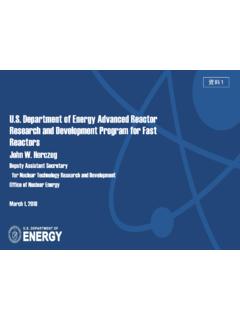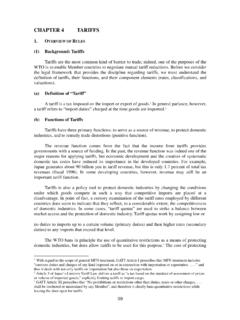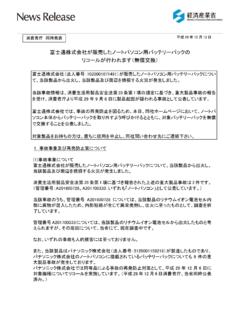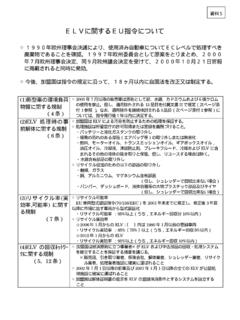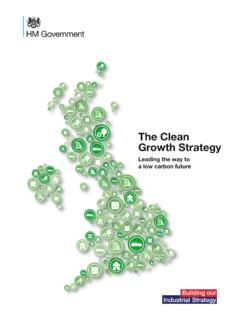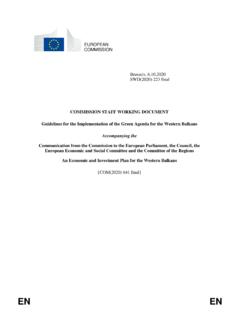Transcription of Green Growth Strategy Through Achieving Carbon …
1 Green Growth Strategy Through Achieving Carbon Neutrality in 2050 December 25, 2020 provisional translation Contents 1. Green Growth Strategy Through Achieving Carbon Neutrality in 2050 .. 1 (1) Relationship between Carbon Neutrality and Green Growth Strategy .. 1 (2) Realization of Carbon Neutrality in 2050 .. 2 2. Framework of Green Growth Strategy .. 4 3. Major Cross-cutting Policy Tools .. 6 (1) Budget ( Green Innovation Fund) .. 6 (2) Tax systems .. 7 (3) Financing .. 10 (4) Regulatory reform and standardization .. 12 (5) International cooperation .. 14 4. Action Plans in key industrial fields .. 16 (1) Offshore wind power generation industries .. 17 (2) Fuel ammonia Industries .. 21 (3) Hydrogen industry .. 24 (4) Nuclear industry.
2 28 (5) Automobile and battery industries .. 31 (6) Semiconductor/information and communication industries .. 35 (7) Shipping industry .. 39 (8) Logistics, people flow, and civil engineering infrastructure industries .. 41 (9) Food, agriculture, forestry, and fisheries .. 47 (10) Aircraft industry .. 51 (11) Carbon Recycling industry .. 54 (12) Houses and building industry/Next-generation solar power generation industry .. 58 (13) Resource circulation-related industries .. 63 (14) Lifestyle-related industries .. 65 1 1. Green Growth Strategy Through Achieving Carbon Neutrality in 2050 (1) Relationship between Carbon Neutrality and Green Growth Strategy In October 2020, the Japanese government announced the Carbon Neutrality in 2050.
3 Gone are the days when countermeasures to global warming are considered as a cost or constraint to the economic Growth , the world has entered a new era to grasp them as a great opportunity for further prosperity. Changing from the conventional mindset, to take measures positively to tackle climate change heralds transformation in the industrial structure and social economy, and leads to the next strong Growth . The Green Growth Strategy is a set of industrial policies to create such a virtuous cycle of economy and environment . It is easy to tell rhetoric such as changing from the mindset and transformation , but in reality, Carbon neutrality will require an enormous effort. In the industry, many companies will have to fundamentally change the business models and strategies they have been using.
4 While, it s also a chance for them to lead the new era. The role of the government is to provide full support to private companies in conducting their forward-looking challenges, such as a bold investment to make innovation. The government needs to put up an as-specific-as-possible prospect, set high goals, and develop an environment that facilitates ventures of private enterprises. What is particularly important towards the 2050 Carbon Neutrality will be initiatives in the field of energy that accounts for more than 80% of greenhouse gas emissions. For that reason, from the viewpoint of industrial policies, in order to ascertain which fields and industries are expected to grow, first, the government needs to present a blueprint of energy policies and energy supply/demand structure needed to realize the 2050 Carbon Neutrality, as a reference value in deepening discussions.
5 Through the Green Growth Strategy , the Japanese government will set high goals and muster all possible and necessary policies for the thus-determined industries (14 industrial fields) that are expected to grow. Decarbonization of the power sector is the major premise. Renewable energy will to be introduced as much as possible. Electric power systems will be established, cost will be reduced, and storage batteries will be utilized to accommodate output fluctuations, while maintaining harmony with the surroundings. Accordingly, offshore wind power generation industries and storage battery industries need to be nurtured as a Growth Strategy . Regarding thermal power, the government will pursue its use as an option, presupposing recovery of Carbon dioxides (CO2).
6 Technology will be established, suitable sites will be developed, and the cost will be reduced. Globally, thermal power will remain necessary, especially in Asia, although the extent of use should be as minimal as possible. Considering that, the government shall pursue the use of hydrogen power generation where possible, as an option. Both supply and demand quantities will be increased, infrastructure will be established, and the cost will be reduced. To achieve them, creation of hydrogen industry will be required. At the same time, Carbon recycling industries and fuel ammonia industries will have to be developed. Nuclear power is an established decarbonization technology. While making efforts to improve its safety and reducing the reliance on it as much as possible, the Japanese government will continue to seek making the most of nuclear power.
7 It is necessary to proceed with restarting of reactors with placing utmost priority on safety, as well as to develop safer next-generation reactors. 2 In industrial fields other than the power sector, the primary course of action will be electrification. For heat demands, decarbonized fuel such as hydrogen as well as recycling of CO2 and recovery of CO2 from fossil fuel will also be utilized. To address the anticipated increase in electricity demand due to electrification, Industries related to energy saving need to be developed as growing fields. The industrial sector will require reform of existing manufacturing process, such as hydrogen reduction steelmaking. The transportation sector has to use biofuel and hydrogen fuel, while promoting motorization.
8 The business and household sectors anticipate net zero energy houses/buildings, electrification, hydrogen-powered systems, and use of storage batteries. Accordingly, the hydrogen industry, EV/storage battery industries, transportation-related industries, and housing- and building-related industries have to be bolstered as growing industrial fields. When pursuing the 2050 Carbon Neutrality, in addition to realizing such an energy supply and demand structure, digital control of power network will become necessary. What upholds the Green Growth Strategy is resilient digital infrastructures; Green and digital are the 2 inseparable wheels of a car. Digital infrastructures are required to be reinforced, and the Japanese government definitely needs to cultivate the semiconductor/information and communication industries as growing industrial fields.
9 For example, in the power sector, digital technology is essential in managing smart grids for advanced operation of systems, supply-demand adjustment for solar power and wind power generation whose output varies depending on the weather, and also essential for maintenance and inspection operations of infrastructures. In the transportation sector, automatic driving of cars, drones, aircrafts, and trains will not only improve the convenience of the people but also contribute to improved energy use efficiency. In addition, at factories, manufacturing will be automated Through factory automation (FA) and robots. Meanwhile, in the tertiary industry and household sectors, advent of smart houses (which combine renewable energy and storage batteries using an energy management system for optimal energy use) and service robots will not only realize comfortable life but also achieve efficient energy use.
10 Buds of technology to realize such a society has already come to the surface Through research and development (R&D) conducted to date. In January 2020, the government formulated the Environment Innovation Strategy , aiming to establish innovative technologies for Achieving the Beyond-Zero initiative to reduce CO2 that has accumulated since the Industrial Revolution, under which the Japanese government exhibited the issues to overcome and has been making relevant deliberations. Challenges awaiting ahead of the establishment of such innovative technologies are social implementation and cost reduction by investment for mass production. The government has to muster all available and necessary policy measures such as budget, taxation, finance, regulatory reform/standardization, and international cooperation under the Environment Innovation Strategy to steer private enterprises to in the direction of positively investing the cash equivalent of 240 trillion yen they amass.
